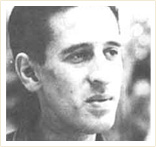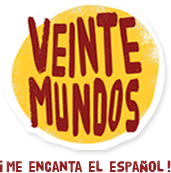El Salvador – Spanish Language and Culture
Population: 6.2 million (2009)
Capital: San Salvador
Area: 21,041 sq km² (8,124 sq miles)
Currency: Dollar (USD)
National Holiday: 15th of September
Calling Code: + 503
Time Zone: GMT – 6
GDP: Total – US$ 21.805 billion (2010)
Per Capita – US$ 3,718

The Spanish Language in El Salvador
Although the Spanish spoken in El Salvador shares many similarities with the Spanish spoken in neighboring countries, there are some distinct differences that lie mostly in the pronunciation of certain words. The use of ‘voseo’ is widely spread both in written and spoken language, while “usted” is used in formal situations. Like its neighbors, it has the characteristic of dropping the ‘s’ at the end of syllables and words and before consonants it is pronounced as ‘h’.
Special words and expressions
- bayunco – Immature, foolish
- bolo(a) – drunk
- cabal – exactly, true, certainly
- chele – usually used to describe a blond or Caucasian person, derived from Leche (milk)
- ¡que chivo! – awesome! How cool!
- me achicó – he/She humiliated me
- que aguambado que eres – you are such an idiot
- bicho/a – girl / boy (also used to say ‘boyfriend / girlfriend)
- no me cuentes carajadas – don’t tell me stories/lies
- chaneque – neighbor/guide
- cachete – a favor
- para de cucar – stop bothering
- se subio a la chicaguita – he/she got cheated on
- eso es gacho – that is useless/bad
- lana – money
- estoy con rispa – I am in a hurry
Articles about El Salvador
-
Intermediate level
- El original negocio de “decorar” los autobuses.
Other languages spoken
- Today there are three important native languages in El Salvador: Kekchí (1,200 speakers mostly who immigrated from neighboring Guatemala), Pipil and Lenca.
- English – has been taught in El Salvador for over 50 years by the British.
- French – There is also an abundance of French schools in the country and it is taught as a second language in many Spanish and English schools.
- Chinese – spoken by around 1,300 immigrants and descendants.
- Turkish – there are close to 500 Turkish speakers living in El Salvador
Spanish dialects and variations
- The use of the ‘vos’ and ‘usted’ as second person singular pronoun is the most common in El Salvador, although there are small regions in the country where the ‘tú’ form is acceptable among close relations.
- During La Matanza in 1932, over 30,000 peasants and local indigenous people were killed by the Salvadoran military, resulting in the loss of many local customs and traditions, including languages. Therefore, Salvadoran Spanish has little influence from native languages, just the Spanish of neighboring countries.


Geography and Climate
El Salvador has a tropical climate all year round, with a rainy and dry season. Its location on the Pacific ring of fire makes it subject to earthquakes and significant volcanic activity. The terrain is made up of coastal lowlands that rise to a plateau and mountains. Temperatures are much cooler at higher altitudes.


Destinations in El Salvador
 Volcán de Santa Ana
Volcán de Santa Ana
- Nature and reserves – Parque Nacional El Imposible, Cerro Monte Cristo National Park, Balboa Park, Lago de Llopango (hiking, swimming, biking, wildlife observation…)
- Archaeological sites –Tazumal, Cihuatan, Guija, San Andres, La Joya de Ceren (heritage site), Corinto, Pachimalco
- Beaches – El Espino, El Cuco, Garita Palmera , La Costa del Sol, El Zunzal (surfing, swimming, boating, fishing…)
- Cities and Folklore – San Salvador, Suchitoto, San Miguel, Acajutla (architecture, local traditions, museums…)
History & Politics
El Salvador was conquered by Pedro de Alvarado and became a Spanish colony in 1540. After declaring independence from the crown in 1821, it was briefly part of the Mexican Empire, later a member of the United Provinces of Central America, and then finally in 1840, El Salvador became a fully independent republic. The 20th Century was marked by a great deal of oppression and fighting within the nation. From 1931 to 1979, the country was ruled by various military officials who brutally oppressed all rural resistance, highlighted by La Matanza in 1932 during which an estimated 30,000 people were killed. A full-scale Civil War broke out from 1980-1992, characterized as a Cold War conflict in which the right-wing military government was backed by the US. In the end some 75,000 lives are thought to have been lost in the conflict. Finally in 1992, the opposing party, Farabundo Marti National Liberation Front was recognized officially and a UN peace accord was signed in Mexico. In the past decade, the country has seen a more peaceful political environment but has suffered several major natural disasters.


¿Sabías qué….? The Izalco Volcano located in the west of the country erupted continuously after its formation in 1770, earning it the title “the Lighthouse of the Pacific”. In 1966 a hotel was built nearby to allow clients to watch the volcano from their rooms – however before the hotel opened, the volcano stopped erupting and has not seen any activity since.


Famous People
 Roque Dalton
Roque Dalton
- Álvaro Torres (singer)
- Noé Canjura (painter)
- Roque Dalton (poet)
- Consuelo de Saint Exupéry (writer, wife of Antoine de Saint Exupéry)
- Osca Arnulfo Romero (bishop, martyr)
- Claribel Alegria (writer – born in Nicaragua but grew up in El Salvador)
- Maria Isabel Arrieta (beauty queen)
- Jorge “El Magico” Gonzales (football/soccer player)
- Mauree Kaila Vergara (cyclist)
- Christy Turlington (supermodel – half El Salvadoran)
Media
Although media in El Salvador is not restricted, censorship does occur to some extent by the various media outlets and journalists. Most newspapers and all but one radio broadcast station are privately owned by influential figures and groups.
El Diario de Hoy – www.elsalvador.com
La Prensa Grafica – www.laprensa.com.sv










